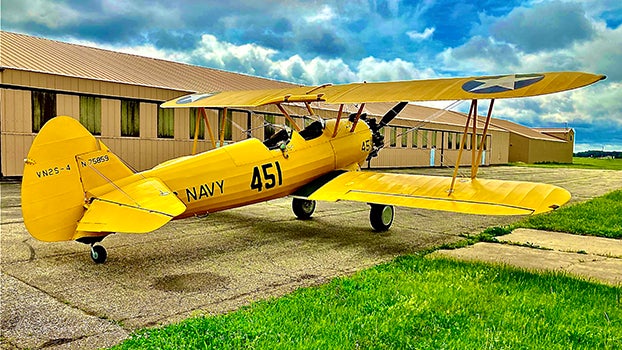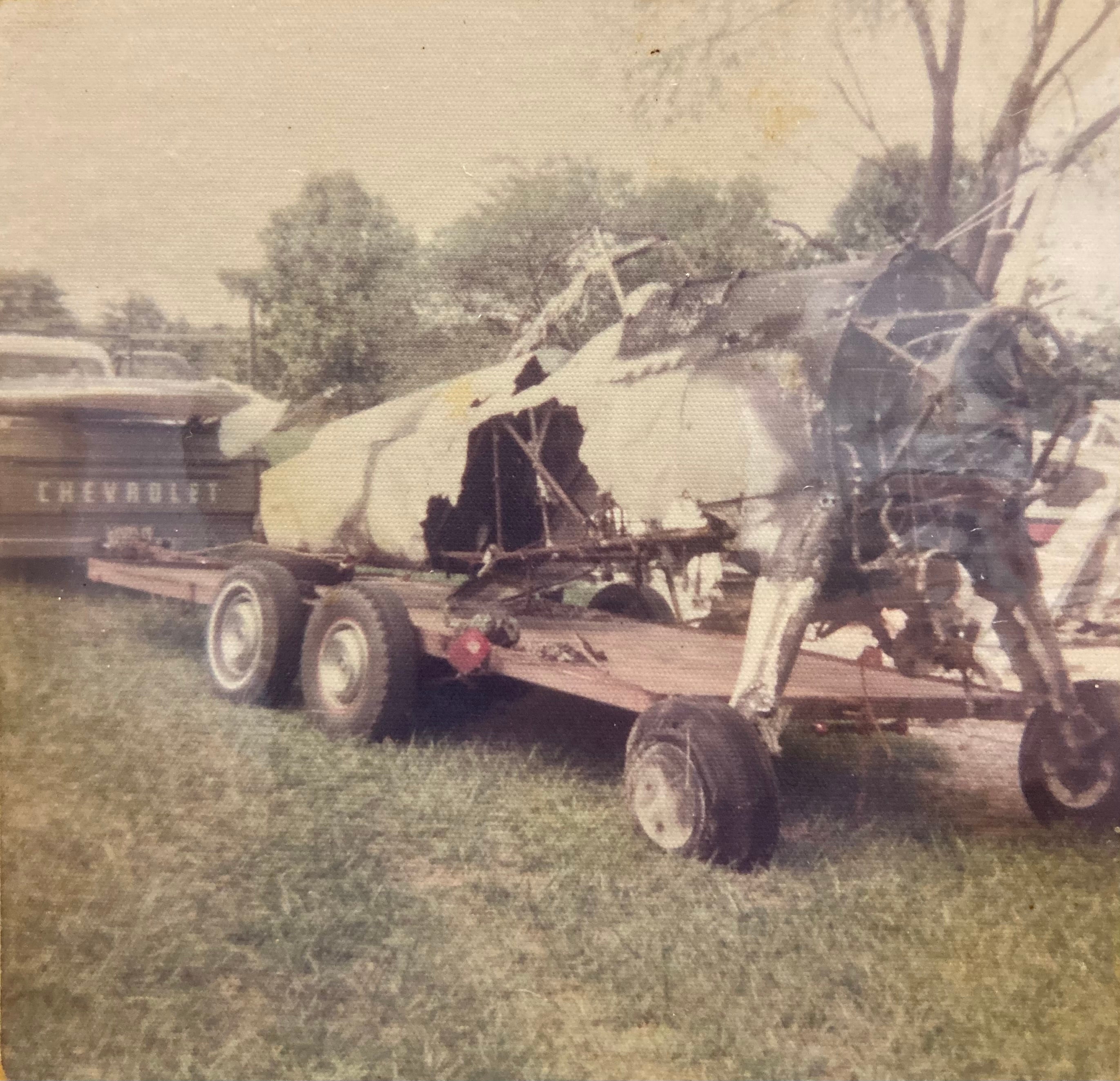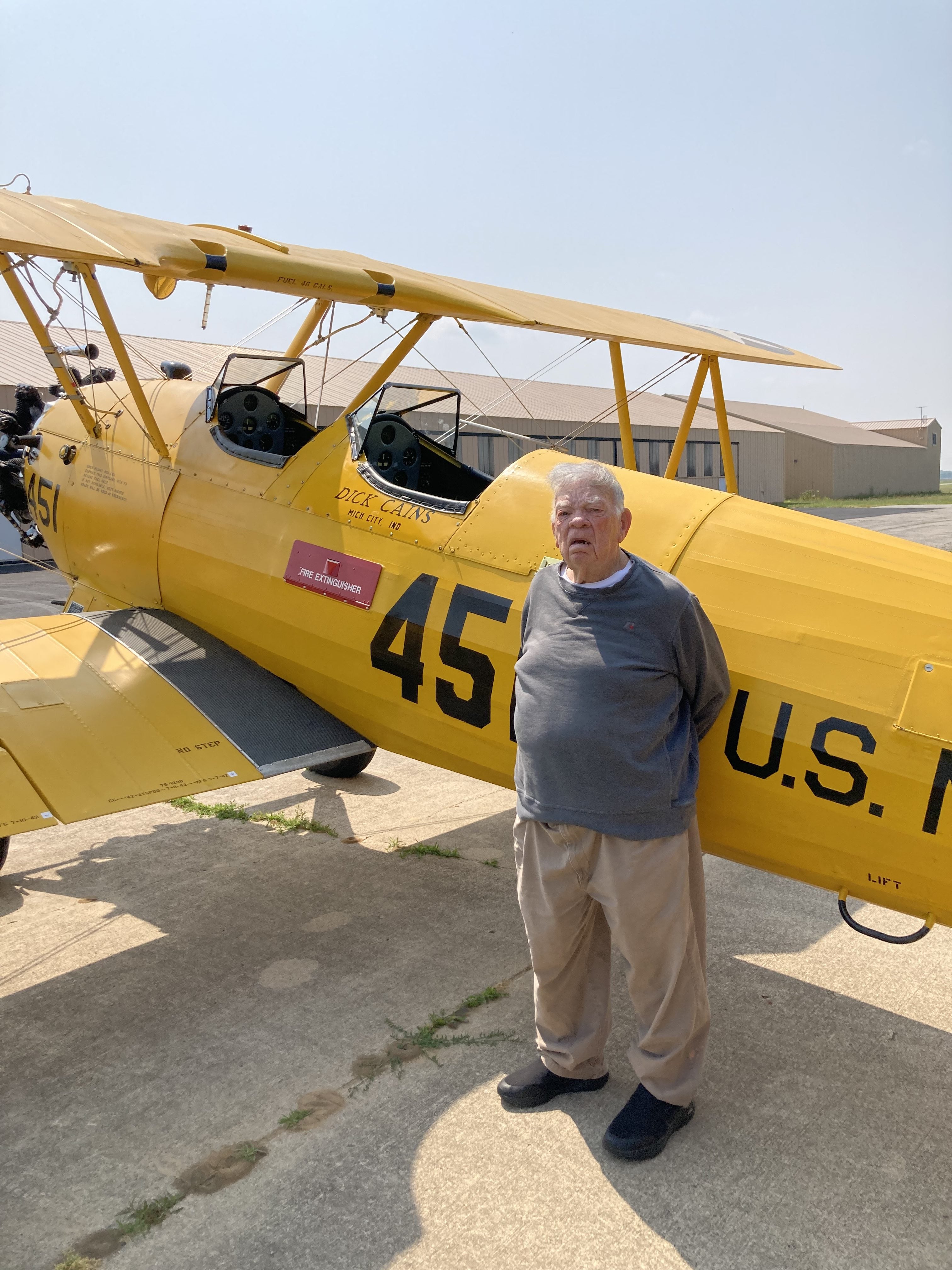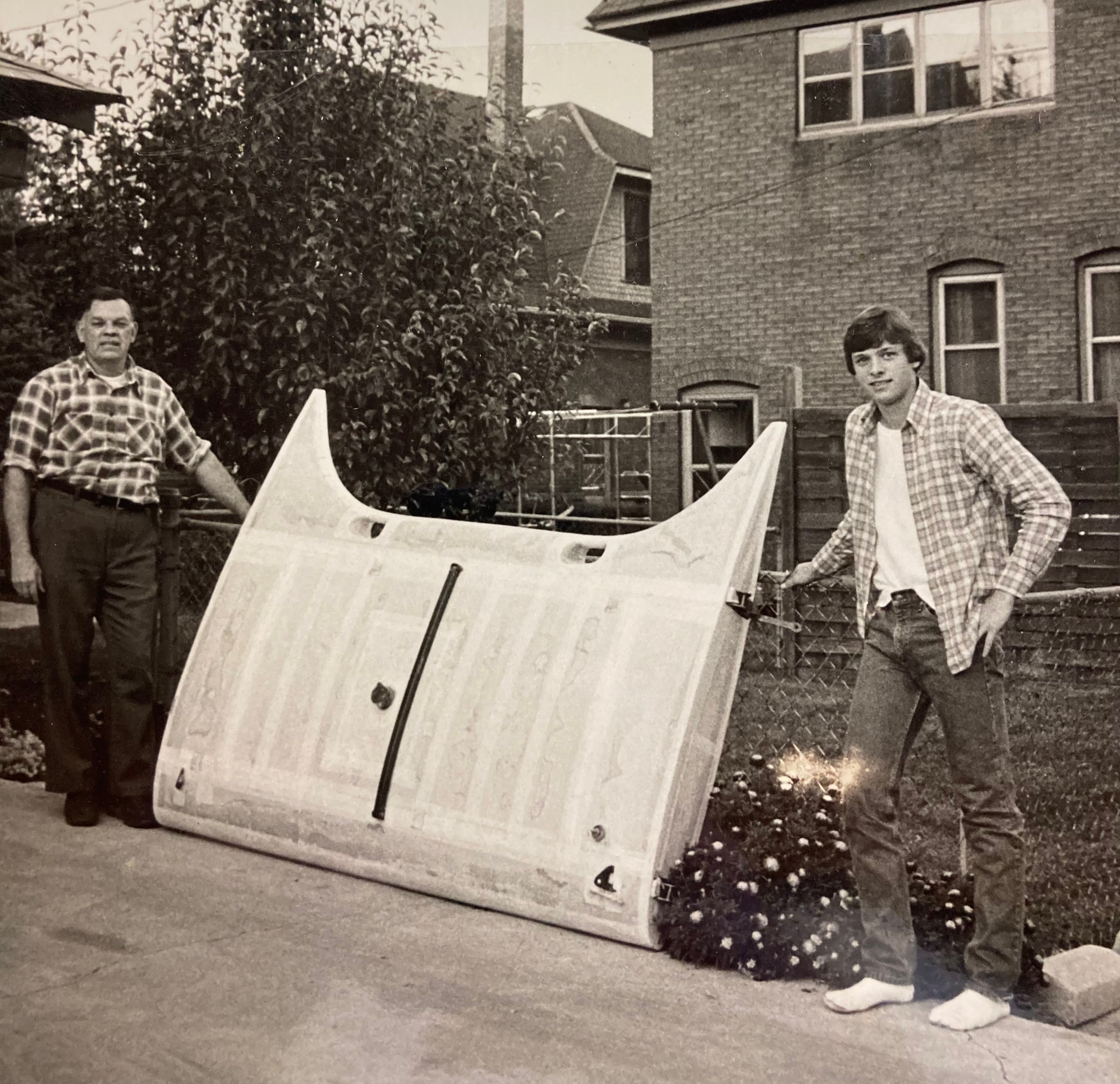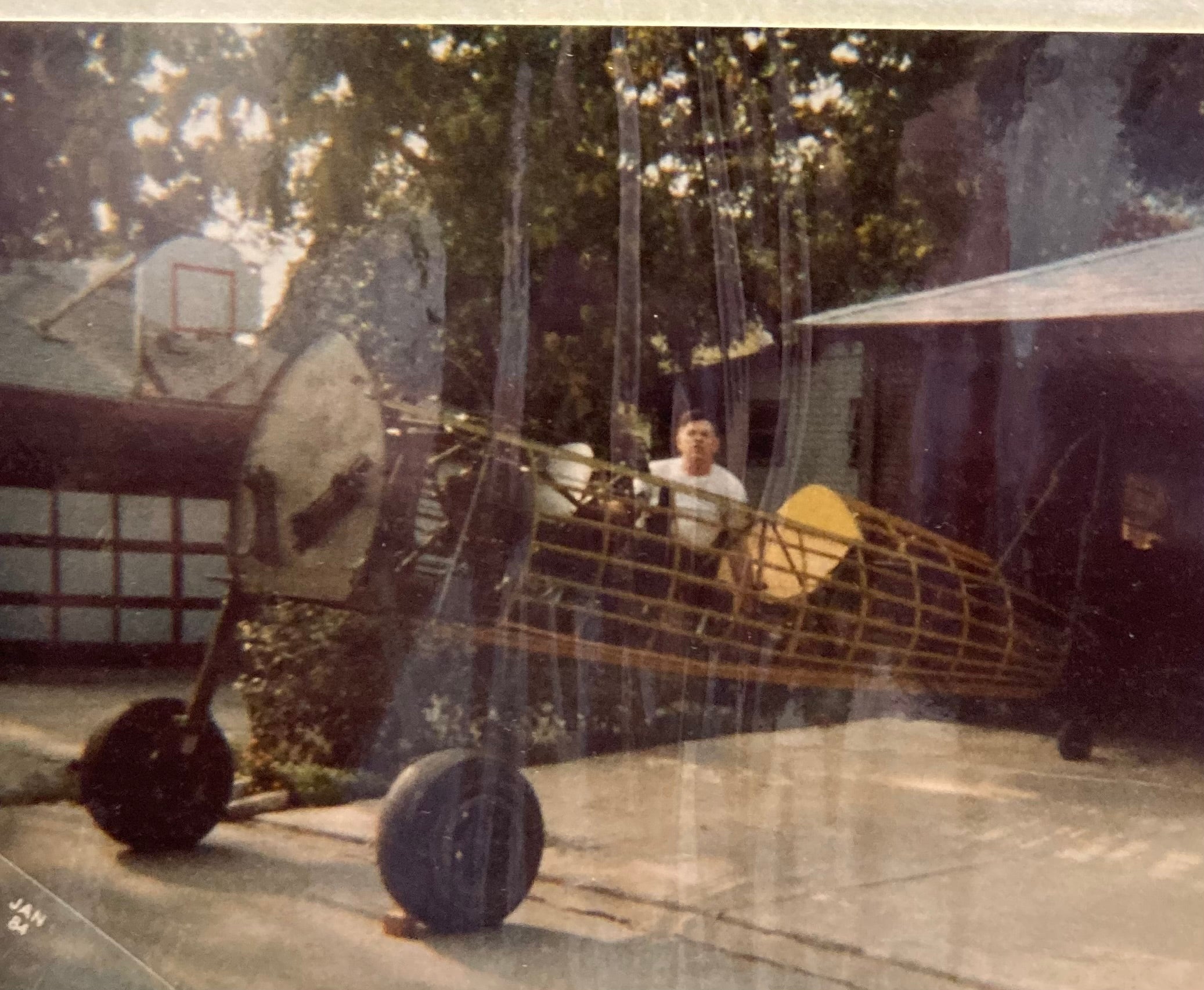Cains: A Boeing in a garage
Published 12:00 pm Friday, October 13, 2023
|
Getting your Trinity Audio player ready...
|
My father was a typical Indiana boy who loved baseball, dogs, and airplanes. All three of these loves came crashing together in the spring of 1938 when he was in second grade. Like many families during this time, his was still dealing with the lingering financial hardships of the Great Depression. With a lack of steady income, his parents lived week to week to find affordable shelter and put bread on the table. Even then healthcare was a luxury that many could not afford.
On a spring day of that year, he played catcher during a baseball pick-up game. With a swing of the bat by his friend Lionel, he was blinded as the backswing of the bat caught him in the face and broke his nose. He had to be carried home. The doctor visited but did very little as corrective surgery was not something the family could afford. It took two weeks for him to get his eyesight back and he missed most of the second grade.
During his recovery time at home, he spent time with his dog, which had a pig as its playmate. Unfortunately, when it came time for the pig to end up on the dinner table, Queeny took note and ran away, never to return. The hanging carcass in the barn must have been too much for the dog to handle. That left my father with his third love, airplanes. He became a very good model builder by taking crashed airplanes from his friends and using whatever wood he could find around the house to rebuild them. This love grew and he had visions of flying real airplanes one day.
Fast forward to the Korean conflict. He enlisted in the Air Force and was told he “may” be able to become a pilot. It wasn’t long after boot camp that the Air Force told him he would never fly since he had broken his nose so severely and it would create breathing problems at high altitude. So, in the infinite wisdom of the military he could not be a pilot but ended up in Strategic Air Command as a propeller specialist, flying high in a C-47, C-97, C-124 and B-50 never having breathing issues.
After his military career, marriage and having four of five children born, his itch to fly grew even more intense and he set out on the great journey to find his dream airplane. A few years prior to that day in 1969 he had the opportunity to go for a ride in a biplane. He loved it and had decided that was the airplane for him. The Stearman is one of the most iconic airplanes known to aviation enthusiasts. It was a primary trainer for both the Army and Navy before and during World War II. This was among the first airplane a “potential” pilot would climb into to see if he could fly. The Stearman was a very durable aircraft designed with safety in mind. A metal tube frame with wood wings helped transfer energy from a crash away from the student who sat in the rear cockpit and the instructor in the front. Flying the Stearman was easy for most cadets. Take offs, landings and even taxing this heavy taildragger is far more challenging, making it a good trainer for future fighter, bomber, and transit pilots of the time.
After the war, a new life for the Stearman was found as most became crop dusters and it is not uncommon to see Stearman performing aerobatics at airshows around the world today. For an 80+ year old airplane it is a testament to the remarkable design and engineering Boeing put into this production aircraft.
After searching for a flyable Stearman in 1969 my father had concluded that purchasing an airworthy Stearman was too expensive, especially with a family to feed. So, he began scrounging around for Stearman parts. As Stearman were becoming scarcer as crop dusters due to the availability of many newer, more efficient aircraft for agricultural use, the worn out and abused Stearman could be found behind barns, hangars, fields and usually in pieces. Over a twenty-year period my father found parts and put together his Stearman piece by piece.
During the 70’s, my father and I took trips across the Midwest looking for Stearman parts. Oshkosh was always a good source of parts during the annual airshow/ “Fly-market. My father helped fund his project by building wings for other people’s projects. For every hour he spent working on his Stearman, he probably spent four working on someone else’s airplane. I remember my childhood home having wings upstairs, in the basement, garage and hearing lots of hammering late at night after my father finished his shift at Bethlehem Steel. My mom was a saint… putting up with parts and smells of toxicity throughout the house. It was funny telling people that we had a Boeing in the garage.
After years of work the airplane finally took flight in the early 90’s, but health issues began to creep up with my father. Heart surgery caused him to lose his medical and the airplane sat. I was married, with children on the way, a new job, a new home and not a lot of disposable income. We kept up with maintenance as best as we could, but an airplane needs to fly to avoid hangar rash. After several years of falling short of the regular maintenance needed, I decided to jump back into working on restoring the airplane to its beauty. A lot of elbow grease was involved in restoring parts, finding parts and bringing the airplane back to FAA standards.
With the help of a few friends and the Stearman Restoration Association’s wealth of knowledge, the airplane is flying again. The airplane has been in the family for 50 years now. That’s far longer than the 29 year post-WWII decommissioning when my father purchased just the airframe in 1975 for $350. This particular model was an Army PT-17 that was sold in a group 39 airplanes to the Navy in 1942 and designated as an N2S-4. It began life in Livermore, CA, then off to St. Louis and Dallas naval air stations. It has served as a crop duster in Texas, Arkansas, Florida and most likely a few other states. It has changed hands many times over the years.
It has served the military, agricultural industry and now as a living piece of history based in LaPorte, IN. By the way, the 451 “buzz” number on the side is in honor of the Michigan City American Legion Skwiat Post 451.
At 92, my father enjoys seeing the Stearman fly over his house. Even with his poor hearing, there is no mistaking the rolling rumble of that radial (round) engine.


